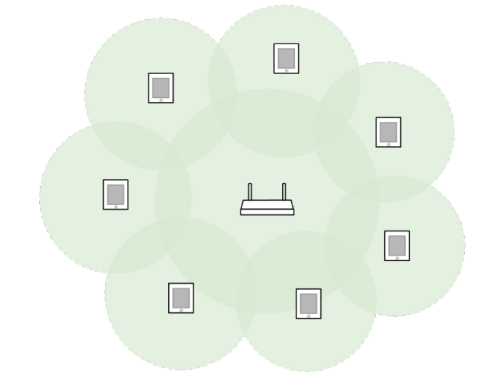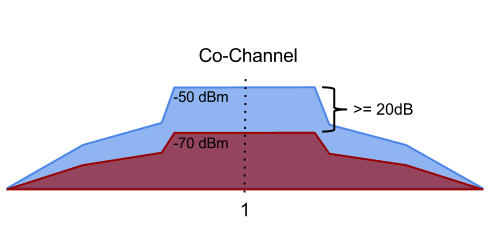Need Help Avoiding Wi-Fi Interference?
Visualize Your Wi-Fi Landscape with inSSIDer!
Working from home? Supporting remote employees? Check out the new Signifi Business.
Now that you know why channels 1, 6, and 11 are the best choices for operating your wireless network, let's talk about interference and congestion.
Recall that channel overlap is bad because of the "conversational" way that Wi-Fi operates, and often times you will find yourself having to manage congestion. In this article, you'll learn about adjacent and co-channel congestion and interference, using conversation as a metaphor.
Visualize Your Wi-Fi Landscape with inSSIDer!
Adjacent channel congestion is the worst type of Wi-Fi interference. To illustrate, think about being at a concert – there's a band playing really loud, and tons of people, each with their own group of friends. With this much going on, it's difficult to talk to your friends, and when you start to talk louder, the person next to you has to raise his voice to talk to their group. You're hearing multiple conversations happening, as well as music from the band, and it seems impossible to communicate. This is exactly what happens to wireless devices trying to communicate in a congested environment.
The diagram below shows a model of how the above conversation scenario looks when access points on channel 4 (red), channel 6 (green), and channel 5 (blue) are all active at once. As one of these APs tries to talk to its clients, its transmissions become garbled because of the transmissions of the other two. This harms the performance of all of the networks.

In order to explain co-channel congestion, we’ll move our imaginary conversation from a concert venue to a classroom. Think back to your school days – chances are you can think of at least one class that had a student who would talk slower than the other kids, and everyone else would have to wait for their turn to ask a question. Co-channel congestion works in a similar manner: the performance is hindered by the wait times, but the bandwidth is managed, and every device will get a chance to talk to its associated AP. The diagram below depicts a wireless access point and its associated clients, which can only talk one at a time.

Co-channel congestion is preferable to adjacent channel congestion because of the way the wireless conversations are managed. As mentioned in our previous article, when choosing a channel that has other networks active, try to keep at least 20 dB between the RSSI levels of the networks, as illustrated below:

To recap, an open channel will always be best when deploying your wireless network, but if you have to share a channel, that’s okay too. Adjacent channel congestion is the one you’ll want to avoid if at all possible.

The image below shows what adjacent channel and co-channel congestion look like in inSSIDer. Having a visual representation of where neighboring wireless access points are active is an invaluable tool when planning your own network. It’s easy to see how chaotic adjacent channel congestion is compared to co-channel!

Hopefully you now have a good understanding of how Wi-Fi congestion is caused, and how to best deal with it in the 2.4 GHz Band.
Next Lesson...
Wi-Fi and non-WiFi
Interference Examples
Wi-Spy Air is the fast, portable and accurate way to validate and troubleshoot Wi-Fi environments. Level up your iOS or Android device with Wi-Spy Air’s onboard Wi-Fi chipset, transforming it into a professional Wi-Fi troubleshooting tool that's always there when you need it.

Reliable home Wi-Fi is too important to just cross your fingers and hope for the best.
Learn More
Monitor small business networks, manage change, and troubleshoot as a team
Learn More
Deploy, diagnose and troubleshoot enterprise networks with professional tools
Learn More